




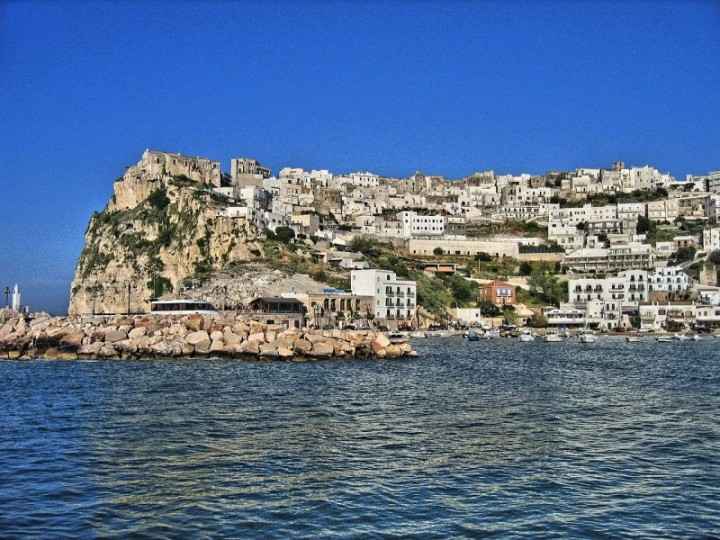 The town of Peschici stands on a cliff in a splendid position overlooking the sea. A Gargano destination quite appreciated, it still retains the influence of its Moorish origin, a memory of Arab domination and incursions, with caves carved into the rock and ancient white houses with domed roofs.
The town of Peschici stands on a cliff in a splendid position overlooking the sea. A Gargano destination quite appreciated, it still retains the influence of its Moorish origin, a memory of Arab domination and incursions, with caves carved into the rock and ancient white houses with domed roofs.
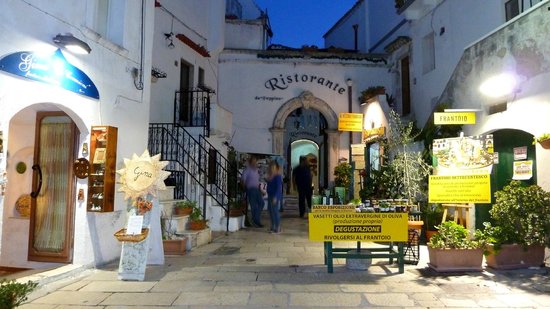 The historic center is full of fascinating views, with artisan shops and numerous restaurants where you can taste the typical dishes of the Apulian tradition. Walking through the narrow alleys dug into the cliff or climbing the small and winding staircases that characterize it, there is a unique atmosphere: the scent of the maritime pine mixed with the salty air blends with the smell of rosemary and caper that here grow spontaneously.
The historic center is full of fascinating views, with artisan shops and numerous restaurants where you can taste the typical dishes of the Apulian tradition. Walking through the narrow alleys dug into the cliff or climbing the small and winding staircases that characterize it, there is a unique atmosphere: the scent of the maritime pine mixed with the salty air blends with the smell of rosemary and caper that here grow spontaneously.
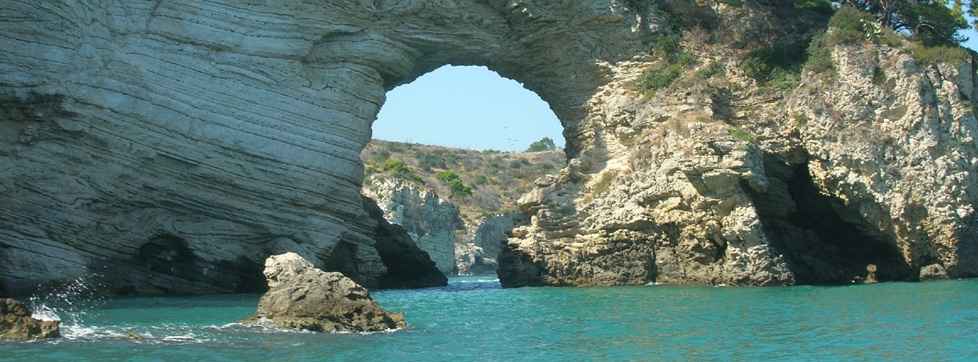
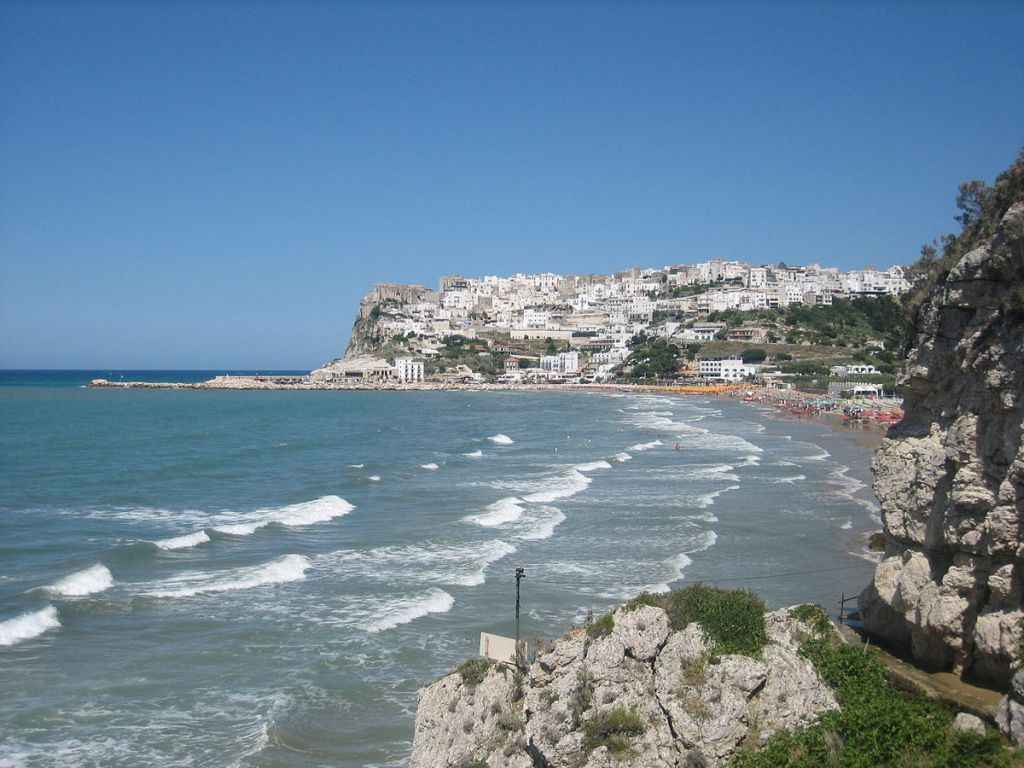 Among the many beaches that surround it, one of the most beautiful is the Bay of Manacora, located on the extreme tip of the Gargano coast with a splendid beach of fine sand framed by rocks close to the Gargano National Park. The Bay of Peschici is renowned for its white sand beach, about 1.2 kilometers long, framed by large rocks, which make it a peaceful beach ideal for children. Excursions by boat leave the port of Peschici to visit the sea caves on the coast and journeys to the Tremiti Islands.
Among the many beaches that surround it, one of the most beautiful is the Bay of Manacora, located on the extreme tip of the Gargano coast with a splendid beach of fine sand framed by rocks close to the Gargano National Park. The Bay of Peschici is renowned for its white sand beach, about 1.2 kilometers long, framed by large rocks, which make it a peaceful beach ideal for children. Excursions by boat leave the port of Peschici to visit the sea caves on the coast and journeys to the Tremiti Islands.
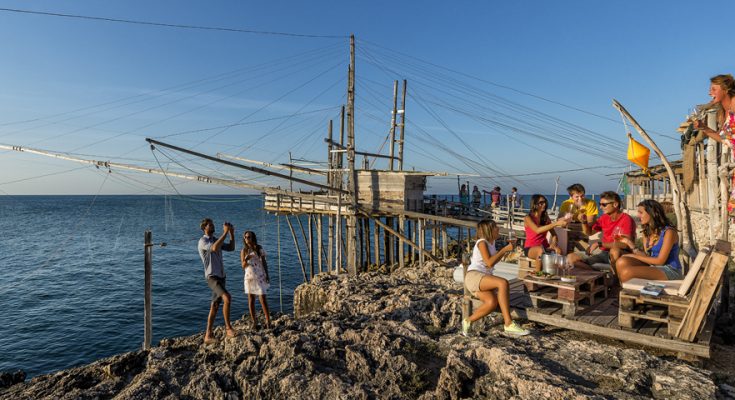 Walking along the coastal stretch that goes from Peschici to Vieste, it is possible to admire the ancient sighting towers and the famous trabucchi. The term "trabucco" is dialectal, most likely deriving from the Latin "trabs-trabis", meaning "wood" or "beam". These are ingenious instruments used for fishing, made with piles driven into the rocks and ropes that hold a large net lowered into the water, called "trabocchetto" (trap), with which the fish is caught. It constitutes the traditional fishing system still used by the Peschici. Traditional fishing system of Peschici dwellers characterized by poles lodge into the rocks and ropes holding a large net lowered into the water, called trabocchetto (trap), where the fish is caught. These suggestive fishing tools, defined examples of bio-architecture, stretch out across the wild beauty of the blue sea, almost challenging the advance of cement.
Walking along the coastal stretch that goes from Peschici to Vieste, it is possible to admire the ancient sighting towers and the famous trabucchi. The term "trabucco" is dialectal, most likely deriving from the Latin "trabs-trabis", meaning "wood" or "beam". These are ingenious instruments used for fishing, made with piles driven into the rocks and ropes that hold a large net lowered into the water, called "trabocchetto" (trap), with which the fish is caught. It constitutes the traditional fishing system still used by the Peschici. Traditional fishing system of Peschici dwellers characterized by poles lodge into the rocks and ropes holding a large net lowered into the water, called trabocchetto (trap), where the fish is caught. These suggestive fishing tools, defined examples of bio-architecture, stretch out across the wild beauty of the blue sea, almost challenging the advance of cement.
